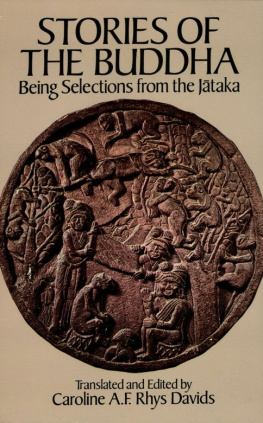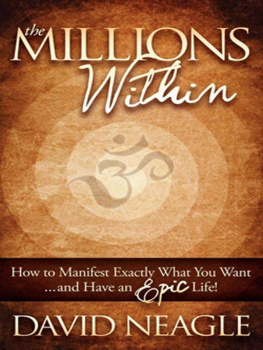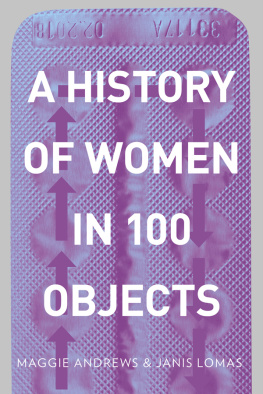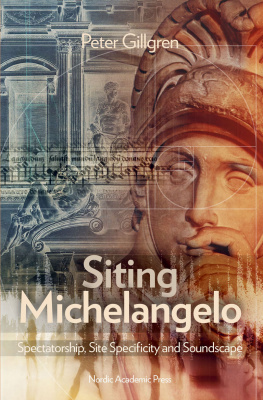This book has its roots in decades of studying and teaching art history, but the idea came quite suddenly one day in the autumn of 2010. My old pedestrian commute to the Rumsfeld Foundation offices took me down 15th Street in Washington, D.C., past the Washington Post building with the news scrolling by on a red LED display. It made for an interesting mental juxtaposition with my ruminations on a colleagues project, which posits that Michelangelos so-called Rebellious Slave and Dying Slave, now in the Louvre, had been given to Francis I by Roberto Strozzi as part of an effort to persuade the French king to help save the Florentine Republic from the resurgent Medici in the late 1520s. The entreaty failed, and the participation of these sculptures in the political turmoil of their day was eventually forgotten after they joined the French royal collection; but the slaves had once been, in their own way, warriors for freedom. This line of thought led to Michelangelos more famous David and how it was similarly recontextualized as a Medici emblem and then as an icon of idealized male beauty. How many viewers knew that the statue was originally commissioned by the Florentine Republic? Then I wondered how many other artworks had similarly obscured origins in free systems of government. Little did I know where these seemingly idle musings would lead, or foresee that the Dying Slave would wind up making an appearance in a chapter on the French Revolution.
Maria Ruvoldt, Michelangelos Slaves and the Gift of Liberty, Renaissance Quarterly 65 (2012), 102959.
The development of these ideas into a book has benefited from the input of many other colleagues and dear friends. My original companions were my family, starting with my parents, Anne and Gene Gardner, and my brother, Eugene, with whom I made my first visit to Europe in 1974. The first work of art I remember seeing is The Night Watch. Subsequent trips to Greece, England, Italy and beyond brought us into contact with many of the objects under consideration here, notably the Parthenon, the Elgin Marbles, St. Marks Basilica and Michelangelos David, so that by the time I started writing this book they were old friends. As our family has expanded it has been a joy to share more adventures with my husband, George, and our children, Gardner and Gowen, as well as my indefatigable sister-in-law, Bernadette, and cherished nieces: Caroline, Victoria, Abigail and Grace.
From my earliest days as an art historian I was immensely fortunate in the trio of advisers who guided my steps: Michael Mahoney of Trinity College, Samuel Y. Edgerton, Jr. of Williams College, and Malcolm J. Campbell of the University of Pennsylvania. All three of these institutions and their staffs have remained valued sources of guidance and support for many years after graduation particularly in the art history departments and also at the Trinity College Rome Campus, the Clark Art Institute, Penns University Museum, Penns Fisher Fine Arts Library, and the PennBryn Mawr College summer program in Florence.
I am also grateful for the fellowship of so many professors, mentors, colleagues, students and friends who have shared portions of this journey with me, notably Brian T. Allen and Steven Horsch, Linda and Ronald Anderson, Simi Kaplin Baer, Mary Beard, Michela Capasso, Bunny Coates, George G. H. Coates, Carol and Paul Collins, Jodi Cranston, Maria diPasquale, Howard Downey, John Duffy, Erick Woods-Erickson, Doug Feith, Kathy and Law Fotterall, David Goder, Alden Gordon, Daryle and Jimmy Hanlon, James Hargrove, Lothar Haselberger, Renata Holod, Elsbeth and Marco Keller, Ann Kuttner, Ken Lapatin, Samantha Leahy, Michael and Barbara Ledeen, Catriona MacLeod, Betsy Brubaker McGill, Stewart Manger, Anita and Rick Perry, Livio Pestelli, Herman Pirchner, Patricia Reilly and David Creagan, Liz and Larry Richardson, Betsey Ann Robinson, Allen Roth, Chip Roy, Maria Ruvoldt, Jon Seydl, Dor Shapira, Sandy and Nort Sloan, Carolyn and Ignat Solzhenitsyn, Paul Tucker, and Mari and George Will.
This book would not exist without the generous early support of the Earhart Foundation, under the able leadership of Ingrid Gregg and Montgomery Brown. Thanks are also due to the Commonwealth Foundation and the Foundation for Defense of Democracies for believing that an art historian had a meaningful contribution to make to the important work both institutions do to promote liberty in the modern world. I am grateful to the contributors and community of Redstate.com for providing a sounding board as well as a treasured source of comradeship.
The bulk of Davids Sling was written at idyllic Andalusia on the Delaware River in Pennsylvania, some twenty miles south of where General George Washington made his bold crossing that frigid Christmas night in 1776. It was an endless source of inspiration to look out upon the historic Biddle estate a nineteenth-century, New World interpretation of the Parthenon, providing architectural evidence of the visceral connection felt by the founders of the United States to the birth of democracy in classical Athens. Many thanks to Kristen and Jamie Biddle and all the community of Andalusia for welcoming me, and to Richard Snowden and Fred Holzerman for thinking it was a good idea in the first place.
My transition from academic to commercial publishing has been deftly managed by the capable and creative group at Javelin, D.C., led by Keith Urbahn and Matt Latimer. The learned and patient Roger Kimball and his team at Encounter Books, who also bravely accepted a jackalope project without a traditional identity or readership have been a joy to work with, as has my exemplary editor, Carol Staswick. Michael Sobolik provided invaluable assistance with both substance and the Herculean task of tracking down the photo permissions.
A short explanatory autobiographical note: I do not know what possessed Donald Rumsfeld to conclude one day in May 2007 that an art historian (of all things) was the right person to help organize his memoir documenting some six decades of service to our country. But I am grateful that he fulfilled his historic role as the storm in the calm and presented me with the challenge and opportunity to apply the training of a historian to a living subject, whose story encompasses events from the attack on Pearl Harbor to the attacks of September 11, 2001 and beyond.
After four years studying the formation of American national security and foreign policy under Mr. Rumsfelds watchful eye, I started being asked questions about current events, and answering them. This development led to perhaps the most unexpected twist in a life full of surprises when I joined the staff of Senator Ted Cruz of Texas as an adviser for national security policy in March 2013. And despite the delays to my publication schedule caused by Mr. Cruzs remarkable enthusiasm for his job, waking up every morning with the directive to fight for freedom has greatly enriched this book.
All these professional shenanigans would not be possible without the love, support and inspiration of my wonderful family, to whom this book is dedicated with it bears repeating all my love. There simply are no words to thank them for their steadfast belief in and enthusiasm for this project and its author.
Andalusia, Pennsylvania
September 2015
Maria Ruvoldt, Michelangelos Slaves and the Gift of Liberty, Renaissance Quarterly 65 (2012), 102959.
A Note on the Type
DAVIDS SLING has been set in Monotype Dante, conceived and drawn in 1954 by Giovanni Mardersteig, the scholar-printer of Verona. The punches for the original foundry versions of the type were engraved by the Parisian punchcutter Charles Malin in two text sizes and one display size: a more complete range of sizes was later made widely available for Monotype composing machines under Stanley Morisons direction, and further weights were added when the types were digitized in 1993. Derived from Mardersteigs deep knowledge of Renaissance type forms, the design of Dante is exceptional for its readability and for the balance between its roman and italic faces. In no way an everyday type, Dante shows to best advantage in more formal pages in which types of similar derivation like Bembo, Jenson, or Centaur may not quite be suitable by virtue of their individual quirks. The display type is DF Rialto, a modern interpretation of Renaissance calligraphic hands, designed by Giovanni di Faccio & Lui Karner.
Next page








